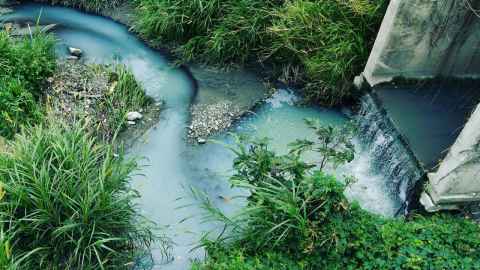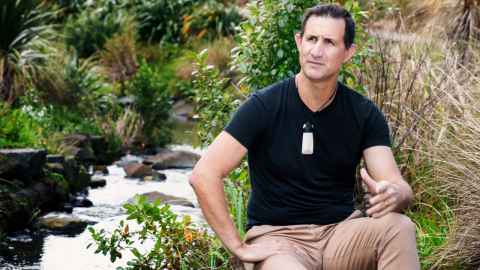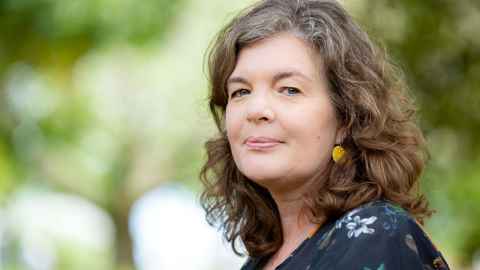Is a water crisis on the horizon?
23 May 2025
Water infrastructure in Aotearoa is in a 'dire state' requiring not only major investment but a mindset shift, says Associate Professor Dan Hikuroa.

On 29 May, Associate Professor of Māori studies Dan Hikuroa will join a panel of local and international experts discussing the state of water in New Zealand and globally.
With climate change causing more frequent extreme rainfall in some areas, Hikuroa says lakes, rivers and the sea are suffering from contamination with everything from sewage to industrial runoff.
“After heavy rain, it’s not unusual for swimming to be categorised as unsafe at more than 60 beaches in Auckland. That’s due to sewage mixing with stormwater washing off our roads and roofs and overflowing into the sea.
“We’ve had decades of underinvestment in water infrastructure, whether that’s getting freshwater to houses or wastewater and stormwater systems.
“It’s not just a problem in Auckland. Throughout the country, it’s pretty much broken or not working as intended in the majority of places,” says Hikuroa.
Central and local government urgently need to invest in upgrading “woefully outdated” water infrastructure, he says.
Changing our attitude to water is vital to shift the realities New Zealand faces, particularly as climate change hits, says Hikuroa.
He upholds a traditional Māori view of water as a sacred taonga - something to be treasured.
“Water is often framed as a property right and a commodity.
“We need to think of water as a taonga, as something to have a relationship with, and then different realities can start to happen.”

Hikuroa says sadly in some areas, intensive land use is draining waterways for irrigation and contaminating rivers, lakes and eventually the sea with sediment and excess nutrients.
Forestry can also lead to sediment washing into waterways, smothering aquatic and marine life, he says.
Massive amounts of forestry slash – leftover wood – is washing into rivers and onto beaches.
“Forestry slash, exposed disrupted soil and heavy rainfall is a terrible recipe for disaster, which we have already experienced with the devastation caused by Cyclone Hale and Gabrielle in places like Gisborne.”

The panel discussion- A Coming Water Crisis: Science, Politics, and Solutions – will also feature University of Auckland Professor Dame Juliet Gerrard, who was chief science advisor to the Prime Minister from 2018 to 2024.
Gerrard says her top concern is water borne illnesses, caused by organisms such as E.coli, campylobacter, cryptosporidium and cyanobacteria.
New Zealand has one of the highest rates of cryptosporidium, giardia and campylobacter outbreaks in the developed world.
The risk of water borne illnesses, which can cause anything from diarrhoea to death, is on the rise due to climate change causing higher temperatures and more rainfall, says Gerrard.
“More investment is urgently needed to improve infrastructure for drinking water supplies in New Zealand, particularly in rural areas.
“We need more resources for checking our drinking water standards are being met and to ensure safeguards, such as filters and chlorination, are in place where they are needed,” she says.
According to Stats NZ, synthetic fertiliser use increased by 629 percent in New Zealand between 1991 and 2019. That is driving up levels of nitrates in drinking water in some areas, such as Canterbury, Gerrard says.
High nitrate levels are associated with blue baby syndrome and some studies have indicated links with birth defects and bowel cancer, though the evidence is not conclusive.
Gerrard says sourcing alternate water may be a safer choice for pregnant women and those making up formula for babies in areas without access to reticulated water supplies, if they have high nitrate levels in their local water supply.
“Nitrates accumulate in groundwater and can stay there for many years.
“Reducing the use of synthetic fertilisers is easily the most useful thing we can do to reduce the levels of nitrates in drinking water in the long term,” says Gerrard.
Boiling water is an effective way to kill many water borne bacteria and parasites, but is not effective for removing cyanobacteria or nitrates, she says.
The panel discussion will also feature University of Auckland antimicrobial resistance expert Professor Naresh Singhal and Lund University’s Dr Filippo Verre, whose research focuses on the geopolitics of water.
The discussion will be moderated by Associate Professor Maria Armoudian, who is director of the University of Auckland Centre for Climate, Biodiversity and Society and of the Sustainability Hub.
A Coming Water Crisis: Science, Politics, and Solutions will open with drinks and nibbles at 4pm on Thursday 29 May at Old Government House, 24 Princes Street, Auckland. The panel discussion will be from 4.30pm to 5.30pm. All are welcome to the free event - register here.
Media contact
Rose Davis | Research communications adviser
M: 027 568 2715
E: rose.davis@auckland.ac.nz